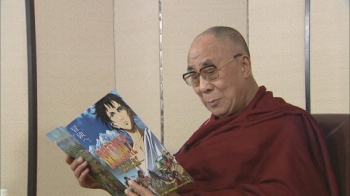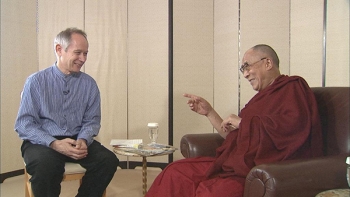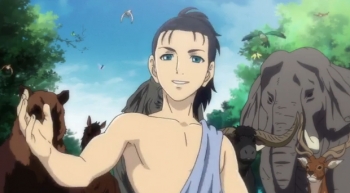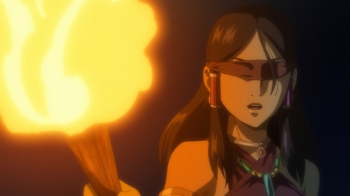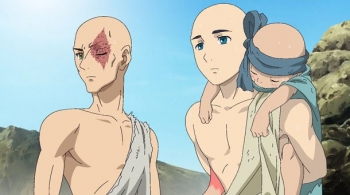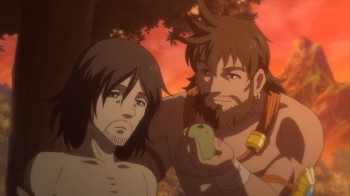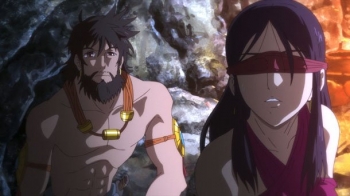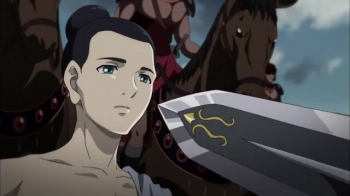In this three-part series, we explore the Buddhist presence in pop culture media. We first review the second movie in the animated trilogy of Osamu Tezuka’s Buddha. In the second entry, we’ll interview Gaetano Maida of the Buddhist Film Foundation about Buddhist-themed film-making, before analyzing how the Buddha is depicted in graphic novels and manga in our third feature.
Few franchises have stimulated greater impassioned debate about how Buddhists should relate to fictional portrayals of the Buddha than Japanese artistic pioneer Osamu Tezuka’s (1928–89) 14-volume manga Buddha. Toei Animation’s Buddha trilogy, which is based on his series, has been unsurprisingly controversial. The first film, Buddha: The Beautiful Red Desert, was released in 2011 and screened in Amsterdam during the Buddhist Film Festival Europe in October that year. The second, Buddha 2: The Endless Journey, was released in 2014. The Dalai Lama was treated to a private screening of Buddha 2 and even appeared on Tokyo MX TV on 18 January 2014 to discuss it. From what he said, he seems to have liked it. “I am very thankful to have the world of the Buddha be spread by the film,” he declared.
The Dalai Lama was not the only one who lent his celebrity glitter. Toei invited the queen of Japanese pop, Ayumi Hamasaki, to sing the movie’s theme song. It also assembled a first-class cast to voice the characters, including Kiyokazu Kanze (the 26th grandmaster of the Kanze School of Noh) and Norwegian Wood’s Kenichi Matsuyama. Despite all this star power, Buddha 2 still received a lukewarm response. So far, reader reviews are aggregated at an overall 3.28 out of 5 on Yahoo! Japan, while other Japanese websites like Coco, Eiga, and Kagehinata rate it at 67 per cent, 3.0/5.0, and 7/10, respectively. Most of the Japanese complaints noted how Toei’s adaptation was curiously joyless compared to Tezuka’s bawdy, irreverent original. There is one final film to be released, and while I don’t expect its overall reception to greatly improve, I’m confident that the Dalai Lama will nevertheless enjoy it.
The Endless Journey is set years after The Beautiful Red Desert’s bloody conclusion. In The Beautiful Red Desert, Prince Siddhartha’s forbidden sweetheart, the bandit Migaila, had her eyes gouged out by order of his father, Suddhodhana. Buddha 2 charts Siddhartha’s journey from extreme asceticism to enlightenment with a new slew of canonical and original characters. The film isn’t perfect—in fact, it’s deeply flawed. Siddhartha’s enlightenment is presented more like a footnote when it should have been the breathtaking climax. Worse yet, some canonical characters that could have appeared awe-inspiring if reinterpreted on the silver screen, like the demon Mara, don’t even appear in the movie.
Yet if Buddha 2 suffers from a profound lack of creativity with canonical Buddhist figures, it delivers on the characters of Tezuka’s fertile imagination. Siddhartha’s reunion with the sightless Migaila is raw. In shock at meeting him again, she recalls how she begged him to become a great king after she was blinded and exiled. The disappointment in her choked voice when he almost reluctantly confesses his renunciation is portrayed to perfection by voice actress megastar, Nana Mizuki. Siddhartha and Migaila share several intimate, emotionally charged scenes (especially one in which she falls ill) where conflicted passions like lingering attachment, platonic intimacy, regret, and mutual empathy meet.
Japanese viewers were merely ambivalent over how far the film deviated from Tezuka’s comic. However, critics in Southeast Asia aimed their anger at how both the films and comics deviated from the Buddhist canon altogether. The colorful critiques, which seem to come from several Buddhist websites such as The Daily Enlightenment, charge that the creative liberties taken by Buddha 2 commit unforgivable distortions of the Buddha’s biography:
